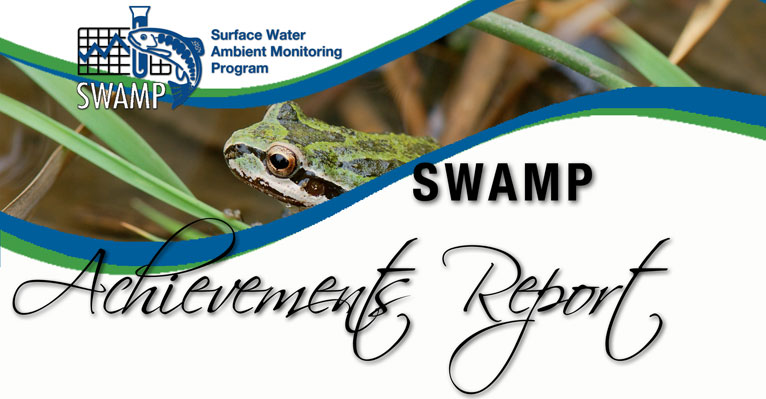SWAMP Achievements Report - Communication
SWAMP Achevements Quick Links
SWAMP develops a variety of tools and resources to support consistent and comparable monitoring information statewide. SWAMP also produces information needed to make decisions regarding water quality resource management. SWAMP utilizes targeted communication and outreach efforts to make members of the public and other agencies aware of the tools, information, and resources generated by the program.
Years
2015
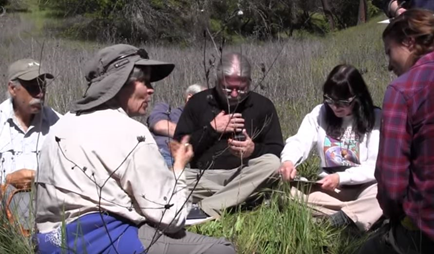 New Habitat Assessment eTool for Citizen Science and Science Technology Engineering and Math (STEM) Education - Clean Water Team - An evaluation of habitat quality is critical to understanding the health of a stream. Visual assessments provide the first level of information about an environment and can serve as useful screening tools to help focus more detailed investigations. In the Spring of 2015 the Clean Water Team (Team) released a new eTool to help evaluate stream habitat conditions. Using an EPA methodology for conducting visual habitat assessment, the Team created a free downloadable and easy to use data form complete with embedded instructions, training documents, and video tips for conducting these assessments. The use of this EPA assessment method and training tools helps ensure data collected is useable and can be collected as part of a citizen science or STEM project. This methodology also produces a Habitat Condition Score, which can be used to communicate water quality management, habitat protection, or vital restoration needs. Download the eTool (.xlsx, 99 MB) and watch the Visual Physical Habitat Assessments videos on the Clean Water Team YouTube channel. For more information, contact Erick Burres (213-712-6862, Email: EBurres@waterboards.ca.gov).
New Habitat Assessment eTool for Citizen Science and Science Technology Engineering and Math (STEM) Education - Clean Water Team - An evaluation of habitat quality is critical to understanding the health of a stream. Visual assessments provide the first level of information about an environment and can serve as useful screening tools to help focus more detailed investigations. In the Spring of 2015 the Clean Water Team (Team) released a new eTool to help evaluate stream habitat conditions. Using an EPA methodology for conducting visual habitat assessment, the Team created a free downloadable and easy to use data form complete with embedded instructions, training documents, and video tips for conducting these assessments. The use of this EPA assessment method and training tools helps ensure data collected is useable and can be collected as part of a citizen science or STEM project. This methodology also produces a Habitat Condition Score, which can be used to communicate water quality management, habitat protection, or vital restoration needs. Download the eTool (.xlsx, 99 MB) and watch the Visual Physical Habitat Assessments videos on the Clean Water Team YouTube channel. For more information, contact Erick Burres (213-712-6862, Email: EBurres@waterboards.ca.gov).
- California Stream Condition Index (CSCI) Scores Map - This map displays statewide the bioassessment sites that have been scored with the CSCI. The CSCI is a new statewide tool that translates complex data about individual benthic macroinvertebrates (BMIs) living in a stream into an overall measure of stream health (see CSCI Fact Sheet and Memo item above). The 1,985 sites displayed includes probabilistic (randomly selected site that represents a known length of stream that is used to infer conditions about a large geographic region) and targeted (fixed site near location of special interest) sites. These sites come from the Perennial Streams Assessment (PSA), Reference Condition Management Program (RCMP), Southern Monitoring Coalition (SMC), U.S. Forest Service, and Regional Board bioassessment monitoring programs. The sites displayed were sampled from 1997 through 2011.
- California Aquatic Bioassessment Workgroup (CABW) - The annual CABW meeting is a forum to learn about current and planned activities in bioassessment. It is also an opportunity to stay in touch with other people in the bioassessment community.
- Published Key Papers in Peer-Reviewed Journals
- Bioassessment in complex environments: designing an index for consistent meaning in different settings - Regions with great natural environmental complexity present a challenge for attaining 2 key properties of an ideal bioassessment index: 1) index scores anchored to a benchmark of biological expectation that is appropriate for the range of natural environmental conditions at each assessment site, and 2) deviation from the reference benchmark measured equivalently in all settings so that a given index score has the same ecological meaning across the entire region of interest.
- Evaluating the adequacy of a reference-site pool for ecological assessments in environmentally complex regions - Many advances in the field of bioassessment have focused on approaches for objectively selecting the pool of reference sites used to establish expectations for healthy waterbodies, but little emphasis has been placed on ways to evaluate the suitability of the reference-site pool for its intended applications (e.g., compliance assessment vs. ambient monitoring). These evaluations are critical because an inadequately evaluated reference pool may bias assessments in some settings. We present an approach for evaluating the adequacy of a reference-site pool for supporting biotic-index development in environmentally heterogeneous and pervasively altered regions.
2014
Statewide Efforts
- Bugs to Go - The California Digital Reference Collection – The Clean Water Team developed a free PDF collection of benthic macroinvertebrates for use on tablets and smart phones.
- Biomonitoring Webinar Video – The Water Quality Monitoring Collaboration Network (WQMCN) produced two webinars and a video on the WQMCN YouTube channel. These videos show methods of monitoring, data collection, and interpretation of data.
Regional Efforts
- SWAMP Cyanobacteria Harmful Algal Bloom (CyanoHAB) Program (Multi-Regional Project; San Francisco Bay Region, Central Coast Region and San Diego Region) – SWAMP’s new CyanoHAB program is part of a statewide initiative to develop in-depth monitoring of cyanobacteria blooms and cyanotoxins. This program utilizes satellite imagery, lab data databases and a website with the imagery and lab data, as well as incident reports and bloom information. This program will help ensure that the public is protected and informed.
- Region 3 Cyanotoxin SWAMP Fact Sheet (Central Coast Region) – The Central Coast Regional Water Board conducted a study in 2014 to screen for cyanotoxins in the Central Coast Region’s largest coastal streams. The data from this study and follow-up monitoring will be used to assess the frequency and magnitude of beneficial use impairment due to cyanotoxins.
- Scientific Presentations (San Diego Region) – Staff of the San Diego Water Board presented the following SWAMP projects at scientific meetings:
- Algae as Indicators for Aquatic Health and Eutrophication in Southern California Streams. Joint Aquatic Science Meeting (JASM), Portland/Oregon, May 2014.
- Small Streams as widespread sources of benthic cyanotoxin production in California. Joint Aquatic Science Meeting (JASM), Portland/Oregon, May 2014.
- Integrative Assessment of Depressional Wetland Condition in California, Joint Aquatic Science Meeting (JASM), Portland/Oregon, May 2014.
- Developing Multi-Indicator Assessments. California Aquatic Bioassessment Workgroup (CABW) 2014, Davis/California, November 2014.
- Challenges and Opportunities of Multi-Indicator Assessments: San Diego River Watershed Example. California Aquatic Bioassessment Workgroup (CABW) 2014, Davis/California, November 2014.
2013
Statewide Efforts
- Collaborating with Citizen Monitors and Watershed Stewardship Organizations – The State Water Board and Sierra Streams Institute held a series of workshops in 2013 to present a comprehensive curriculum for successful collaborations between agencies and watershed organizations.
2012
Statewide Efforts
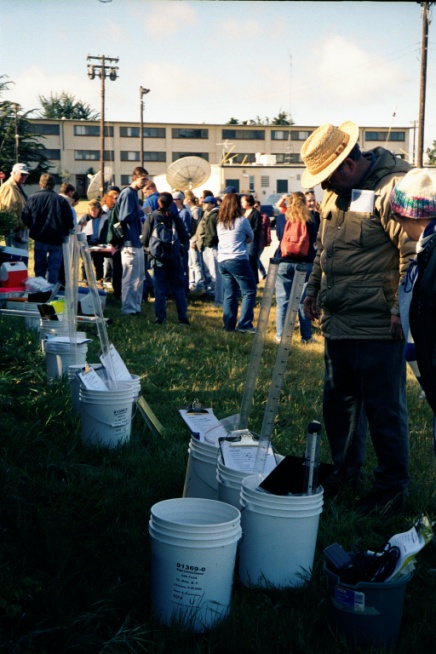
- California Water Quality Monitoring Collaboration Network (CWQMCN) Webinars – The Clean Water Team and Collaboration Network produced twelve informative webinars in 2012.
- Clean Water Team (CWT): Watermarks Newsletter – A bi-annual newsletter produced by the Clean Water Team that serves as an outreach tool for citizen monitoring and watershed stewardship.
- Contaminants in Fish from the California Coast – In 2009-2010, SWAMP conducted California’s largest-ever statewide survey of contaminants in sport fish from coastal locations. A report on this survey was released in 2012. The report, press release, media links, and other information are available at the SWAMP website.
- Findings on Citizen Monitoring Contributions Towards the Monitoring of California Waters and Beneficial Uses – A survey summarizing the contributions of citizen monitoring groups to the state’s water quality monitoring programs.
Regional Efforts
- Los Angeles River Revitalization Master Plan (LARRMP) State of the Watershed Report (Los Angeles Region) – SWAMP and the Council for Watershed Health initiated production of a five-year State of the Watershed Report. The report, scheduled for release in mid-2013, will assess watershed health and address multiple beneficial use questions.
- San Diego Region SWAMP Projects – Improved Communication and Outreach (San Diego Region) – San Diego SWAMP staff improved communication and outreach efforts by writing Executive Officer Reports, presenting SWAMP projects at conferences, and updating the San Diego SWAMP website.
2011
Statewide Efforts
- SWAMP Monitor Newsletter – Fall 2011
- Clean Water Team (CWT) Efforts: Online Resources for Citizen Monitors – Citizen Monitors and many others are provided a broad variety of online resources, including a calendar and YouTube demonstration videos. All of these resources are available on the internet.
- SWAMP staff produced graphics summarizing statewide water and/or sediment toxicity for a variety of coastal waters, lakes and reservoirs, and streams.
- California Water Quality Monitoring Collaboration Network Webinars
- The Clean Water Team and Collaboration Network produced eleven informative webinars in 2011.
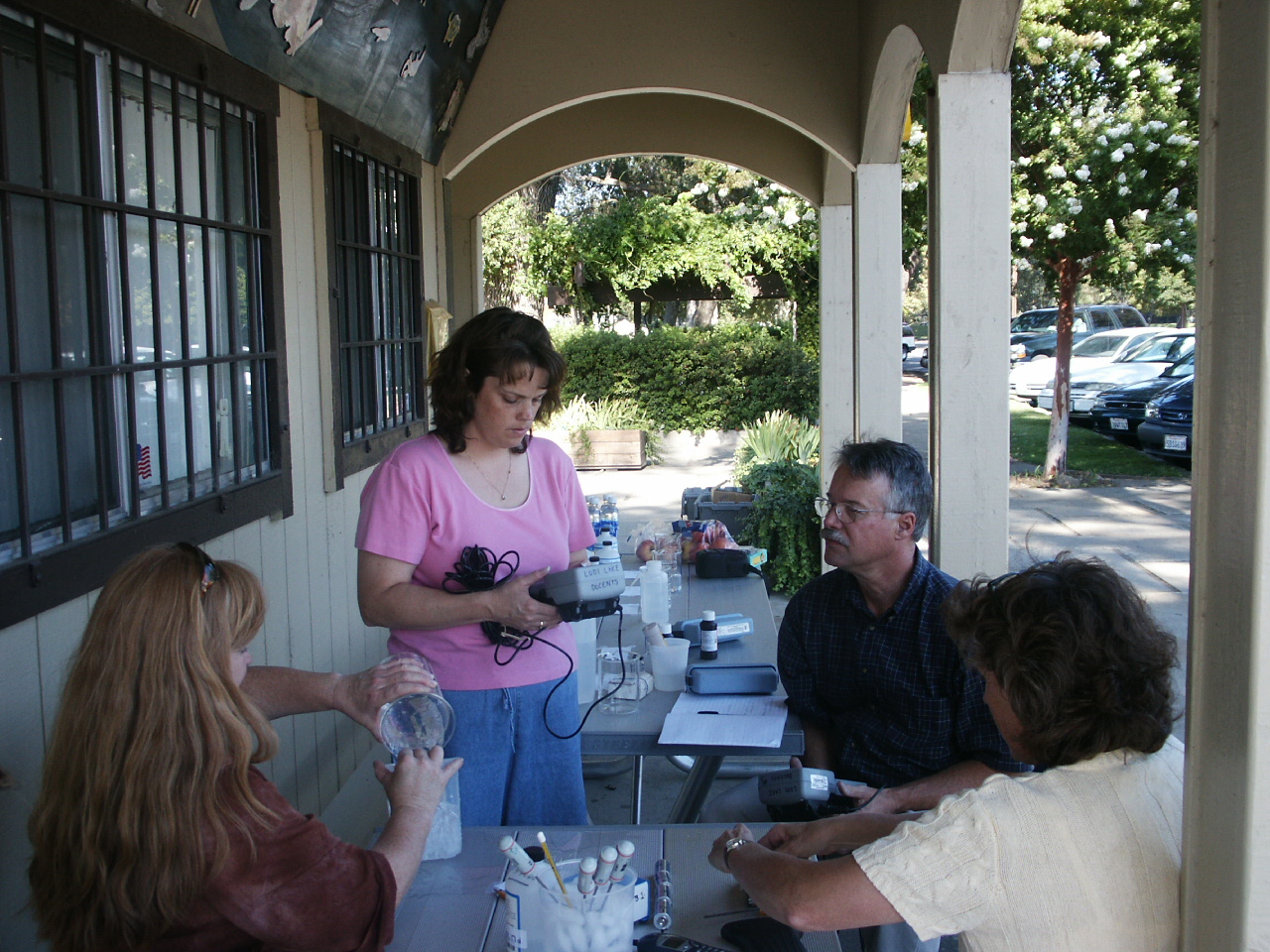
Regional Efforts
- California Stormwater Quality Association (CASQA) Training (Central Coast Region) – Training presented at the CASQA conference provided a comprehensive overview of construction stormwater monitoring considerations for a wide variety of individuals active in this area.
- Central Valley Monitoring Directory (Central Valley Region) – Continued outreach for the Central Valley Monitoring Directory including the California Water Quality Monitoring Council, state agencies, and citizen monitoring groups.
- Safe to Swim Citizen Monitoring Training (Central Valley Region) – Citizen monitoring groups participating in the Safe to Swim monitoring were provided training on the use of SWAMP field sheets and field sampling protocols.
- Scientific Presentations (San Diego Region) – Staff from the San Diego Region made a presentation titled, “Ten years of bioassessment data from a regulators’ perspective: What does the data tell us, and how do we move forward?,” at a meeting of the North American Benthological Society. They also presented at a meeting of the New England Aquatic Environmental Biologists Association a review titled “Biological Integrity in Urban Stream Systems - An Example from Southern California.”
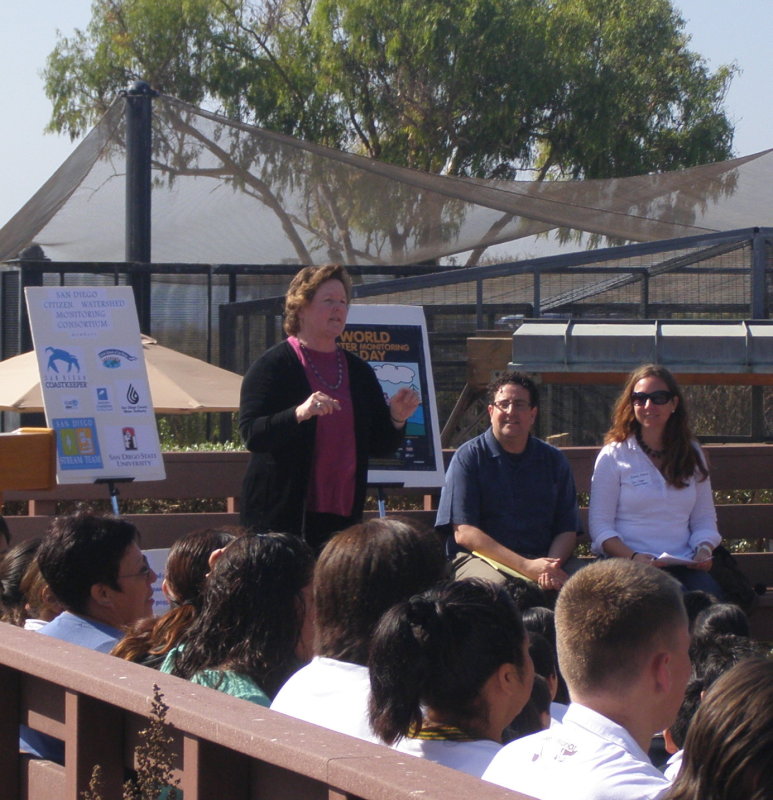
2010
Statewide Efforts
- SWAMP Monitor Newsletter - Fall 2010
- Presentation of Water Board information systems (including CEDEN and SWAMP) to legislative staff - April 2010
- SWAMP Strategy 2010 Update
Published the updated SWAMP Comprehensive Monitoring and Assessment Strategy to Protect and Restore California’s Water Quality (SWAMP Strategy). This document was then appended to the Comprehensive Water Quality Monitoring Program Strategy by the California Water Quality Monitoring Council (CWQMC). - Upgraded the “My Water Quality” Internet Portals, (California Water Quality Monitoring Council)
- Published the Two-Year Lakes Study (2007, 2008): Frequently Asked Questions Fact Sheet
- Clean Water Team (CWT) – California’s Citizen Monitoring Program
- CreekWatch iPhones App Released to Help our Watersheds
- CWT “At Your Service” interactive map
- 2010 California Water Quality Monitoring Collaborative Network Webinar Series
- Continued SWAMP webinars series: Nine webinars were produced in 2010 (Now only available as PowerPoint Presentations):
- Biological Objectives – Introduction to Bioassessment (2010):
Bioassessment is the science of interpreting the ecological condition of an aquatic environment or resource (specifically, a ‘waterbody’ resource such as a stream). It can also be described as a direct measure of a particular ‘waterbody's health’ or the ‘ecological condition’ of a public resource (e.g., streams/rivers) drawn from its resident biota (e.g., fish, insects, algae, plants, etc.). We are using the science of Bioassessment to develop ‘Biological Objectives’ (for our State) to help protect and improve the quality of California’s public waters.
- Establishing Reference Conditions for CA’s Wadeable Perennial Streams (November 2010):
PowerPoint
Reference conditions describe the physical, chemical and biological attributes of streams occurring in regions with relatively low levels of human disturbance. Objective definition of the reference state is the foundation of biological assessment techniques but also serves many other roles in California’s water quality management programs. This presentation covers the development of California’s standardized approach to defining reference conditions and the initial phases of implementation, including approaches for aligning screening thresholds for different regions of the state.
- Sublethal Responses to environmental Stressors in Fish: an Integrative Multi-biomarker Approach (July 15, 2010): PowerPoint
This presentation describes work being performed at the UC Davis Aquatic Toxicology Laboratory on the effects of sublethal ‘stressors’ such as environmental contaminants or pollutants (such as ammonia) on fish (delta smelt).
- The Importance of a Stream’s Physical Habitat Condition and How to Measure It (Spring – Summer 2010): PowerPoint
This PowerPoint presentation describes all the physical habitat features that are measured using the SWAMP Bioassessment SOP (Standard Operating Procedures) and how that data is used in assessment reports. It also discusses how those measures might be used in the future to produce an Index of Physical Condition. Healthy streams and rivers have complex habitats and physical dimensions that favor a thriving and diverse plant and animal community. The SWAMP physical habitat procedures attempt to measure the physical state of wadeable streams and the human stressors that might alter those measurements.
- The Ecology of Benthic Macroinvertebrates and How to Collect and Describe Them (June 17, 2010):
PowerPoint
This presentation describes Benthic macroinvertebrates (BMIs) uses as a water quality indicator for SWAMP assessment reports and will be an integral part of the development of biological objectives. It shows some examples of BMIs, discuss their ecology and explain why they are such good indicators of healthy streams and rivers. It also shows how the BMIs are collected and then processed in the laboratory to produce the biological metrics that are used to create assessment tools such as the SoCal Index of Biological Integrity.
- Central Coast (Central Coast Region) Monitoring and Data Assessment Activities (April 1, 2010):
PowerPoint
This presentaion summarizes monitoring activities of the Central Coast Ambient Monitoring Program and will highlight new CCAMP web-based data display tools.
- San Francisco Bay Regional Board Regional Monitoring and Data Assessment Activities (April 15, 2010):
PowerPoint
This presentaion summarizes water quality monitoring activities conducted by the San Francisco Bay regional SWAMP from 2000 – 2009 including a lakes study on fish contamination, and water quality and trash assessments in creeks. The regional approach to monitoring and assessment and coordination with other programs is highlighted. San Francisco Estuary Regional Monitoring Program (RMP) activities are also highlighted.
- Central Valley Regional Board SWAMP Monitoring and Data Assessment Activities (May 6, 2010):
PowerPoint
This presentaion summarizes water quality monitoring activities conducted by the Central Valley regional SWAMP from 2000 – 2009, including coordinated monitoring efforts with Department of Water Resources Northern District, support of the Delta Regional Monitoring Program, Safe-to-Swim studies, and future use of a web based Central Valley monitoring directory. The regional approach to monitoring, assessment, and coordination with other programs will also be highlighted.
- SWAMP Monitoring and SWAMP leveraged Monitoring in the San Diego Region – past, present, future (June 3, 2010):
PowerPoint
This presentaion gives an overview of the SWAMP monitoring in the San Diego region (R9). Data and assessments from the first five years of the SWAMP rotational watershed monitoring (2001-2005), and the 2007 and 2008 bioassessment studies are discussed. Preliminary results from the first year of the Stormwater Monitoring Coalition (SMC) bioassessment study in Southern California presented. Some SWAMP R9 leveraged projects (e.g. postfire study, Bight ‘08 wetlands eutrophication study) and the coordination with other programs in the San Diego region summarized. The San Diego Data Portal “EcoLayers” introduced. The SWAMP monitoring program for the next 3 years discussed. - Presentations
- Biological Objectives: Presented to the California Aquatic Bioassessment Workshop (CABW) and the California Water Quality Monitoring Council (CWQMC)
- General SWAMP Overview: Presented to the Wetlands 401 Certification Group and the CABW
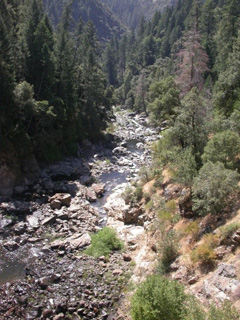
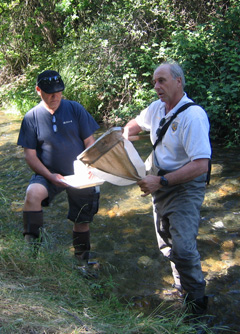
Regional Efforts
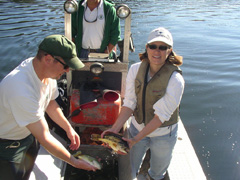
- Central Coast Ambient Monitoring Program (CCAMP) Website Release
- Upgraded the “My Water Quality” Internet Portals, (CWQMC) (Central Coast Region)
- Central Valley Monitoring Directory Released
(Central Valley Region)
- Training and outreach for the Central Valley Monitoring Directory
News Coverage
- Featured in regional news coverage – Contaminants in Fish from California Lakes and Reservoirs, 2007-2008: Summary Report on a Two-Year Screening Survey
- Featured in regional news coverage – Summary of Toxicity in California Waters: 2001 – 2009
2009
- Improved the SWAMP Website
- Re-launched quarterly Monitor Newsletter
- Initiated SWAMP webinars series; Eight webinars were produced in 2009
- SWAMP Comparable Program Guidance
- Quality Assurance/Control Comparability
- Comparability – Data Management Overview
- SWAMP and MLML Website Navigation
- A New Tool for Water Quality Assessment – Algae as Bioindicators
- Contaminants in Fish from California Lakes and Reservoirs
- “My Water Quality” Internet Portals
- Invasive Species Management for Water Quality Monitors
- Featured in national news coverage for Pilot Mussel Watch Program
- Featured in national news coverage for National Lakes Study
Questions or Comments?
- Please direct inquiries to the State Water Board, Surface Water Ambient Monitoring Program (SWAMP).
- State and Regional Board contacts listing: https://www.waterboards.ca.gov/water_issues/programs/swamp/swamp_contacts.html

